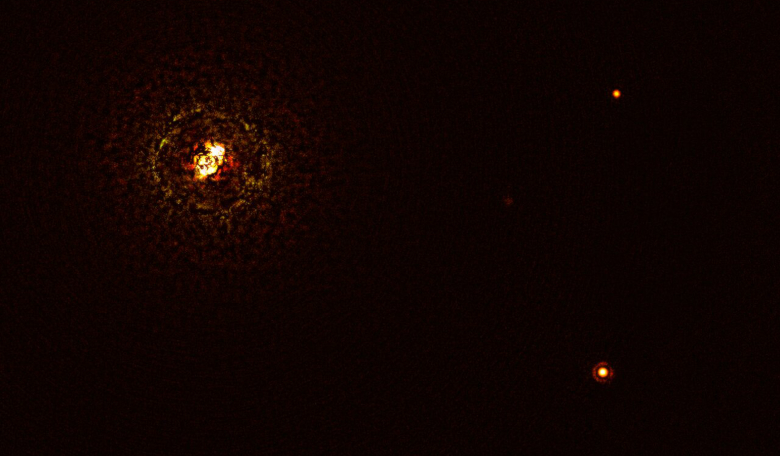Astronomers using the European Southern Observatory’s Very Large Telescope (ESO’s VLT) have captured an image of a planet orbiting b Centauri, a two-star system that is the hottest and most massive planet-hosting star system found to date; a finding which challenges assumptions about which stars can host planets.
Located approximately 325 light-years away in the constellation Centaurus, b Centauri is a young binary star system that has at least six times the mass of the Sun.
It is classed as a B star, meaning it is a main-sequence (hydrogen-burning) star of spectral type B. Along with spectra (the elements that they absorb), stars are also categorised by their temperature, and there are seven main types; O, B, A, F, G, K, and M, with O being the hottest and M-types being the coolest. For comparison our Sun is a G-type star.
The discovery is interesting as until now, no planets had been spotted around a star more than three times as massive as the Sun. Finding a planet around b Centauri therefore completely changes the picture about massive stars as planet hosts, explains Markus Janson, an astronomer at Stockholm University, Sweden and first author of the new study published this week in Nature.
Generally, the hotter a star is, the more high-energy radiation it produces, which causes the surrounding material to evaporate faster. As such B-type stars are often considered to be inhospitable hosts when it comes to planet building.
And b Centauri is no exception. Owing to its intense temperature, the star emits large amounts of heat, and ultraviolet and X-ray radiation – an environment that should make it exceedingly difficult to form a large planet, but that is what Janson and colleagues have found.
Named b Centauri (AB)b or b Centauri b, this extreme exoplanet is 10 times as massive as Jupiter, making it one of the most massive planets ever found. Whats more, it moves around the star system in one of the widest orbits yet discovered, at a distance a staggering 100 times greater than the distance of Jupiter from the Sun. This large distance from the central pair of stars could be key to the planet’s survival.
“The planet in b Centauri is an alien world in an environment that is completely different from what we experience here on Earth and in our Solar System,” explains co-author Gayathri Viswanath, a PhD student at Stockholm University. “It’s a harsh environment, dominated by extreme radiation, where everything is on a gigantic scale: the stars are bigger, the planet is bigger, the distances are bigger.”
Although found by Janson and colleagues with the Spectro-Polarimetric High-contrast Exoplanet REsearch instrument (SPHERE) mounted on ESO’s VLT in Chile, it is not the first time that this extraordinary world has been spotted.
While searching through archival data on the b Centauri system as part of their study, the team discovered that the planet had actually been imaged more than 20 years ago by the ESO 3.6-m telescope, though it was not recognised as a planet at the time.
With upgrades planned for the VLT, and when ESO’s Extremely Large Telescope (ELT) starts observations later this decade, astronomers may be able to unveil more about this planet’s formation and features. “It will be an intriguing task to try to figure out how it might have formed, which is a mystery at the moment,” concludes Janson.











